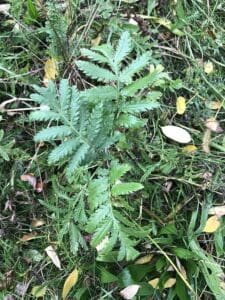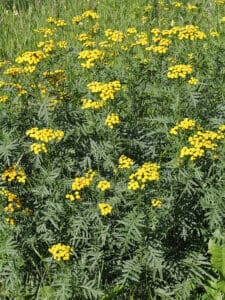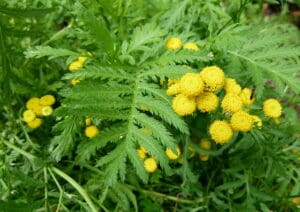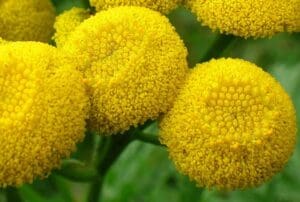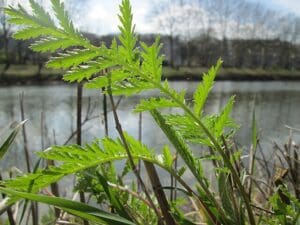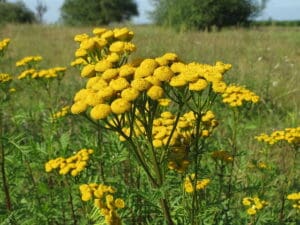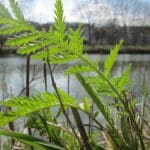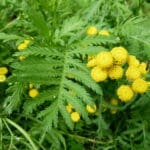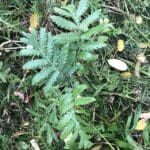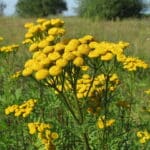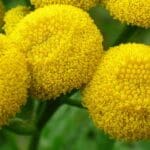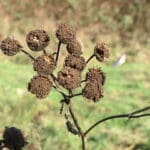Tansy / Spring / Summer / Autumn / Edible
Tansy is an aromatic, perennial member of the Daisy family. It’s a very common plant in the UK with a long history of use. It’s native to Europe and Asia but can now be found almost worldwide.
Common Names
Tansy, Bitter buttons, Cow bitter, Golden buttons
Botanical Name
Tanacetum vulgare
Scientific Classification
Kingdom – Plantae
Order – Asterales
Family – Asteraceae
Physical Characteristics for Tansy
Leaves
The leaves are around 10-15 cm long and they are divided into many leaflets, which are finely toothed, giving the plant a fern like appearance. The leaves grow alternately up the length of the stem.
Flowers
The flower is a composite flower, so the flower heads are made up of lots of tiny flowers called ‘disc florets’, but no outer ‘ray florets’. The flowers grow in terminal clusters and are roundish, yellow and have a flat top. They do look a little like buttons hence the common name Yellow Button.
Habitat
It’s quite a common plant and is usually found on disturbed ground, rough grasslands, riverbanks and roadside verges.
Known Hazards
The leaves and flowers contain a compound called thujone, which can cause convulsions and liver and brain damage if eaten in large quantities. Some sensitive individuals have also experienced contact dermatitis from handling the plant.
Pregnant women are advised against consuming this plant, it was used in the Middle Ages to induce abortions. That being said it has also been used to help women conceive and to prevent miscarriages.
Could be Confused with
It does look quite similar to Ragwort (Jacobaea vulgaris), which is sometimes called Tansy Ragwort. Tansy leaves are much more fern-like in appearance and the flowers lack the ray petals that are found on Ragwort.
Also similar in appearance is St John’s Wort (Hypericum perforatum) but this tends to be a larger plant and its flowers are star shaped with 5 petals.
The young leaves look a bit like Silverweed, but lack the characteristic silver undersides.
Edible Uses
The plant has a pleasant sage like flavour and has been traditionally used as a flavouring for deserts, puddings and omelettes. In Belgium the dried leaves are used in pancakes and the plant is known colloquially as pancake herb.
It’s said that Jack Daniels the famous whiskey magnate enjoyed his whiskey with crushed Tansy leaves and sugar.
Notes on Herbal Uses
Despite the toxicity the plant has been used to treat a wide range of ailments over the centuries. Many suggest that having a bath with Tansy added is helpful in relieving aches and pains.
Tea made from the flowers and leaves is great for treating internal parasites and traditionally teas and Tansy cakes were consumed during Lent to kill worms that the diet of fish caused at the time.
Extra notes from the Foragers
The flowers can be used to make a bright yellow dye and some beekeepers use Tansy as fuel in bee smokers.
References:
What do the wildlife trust say on them
More about some noxious weeds similar to tansy



